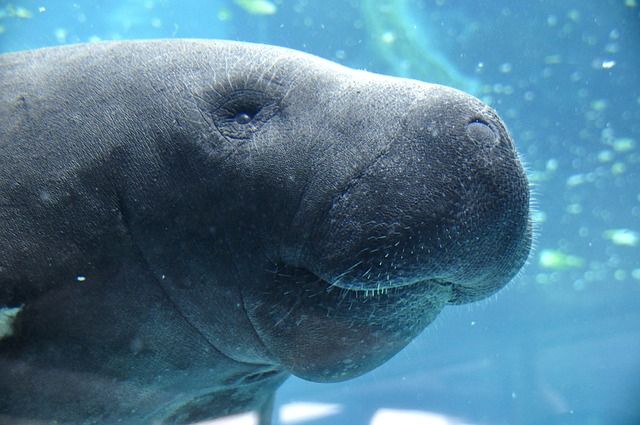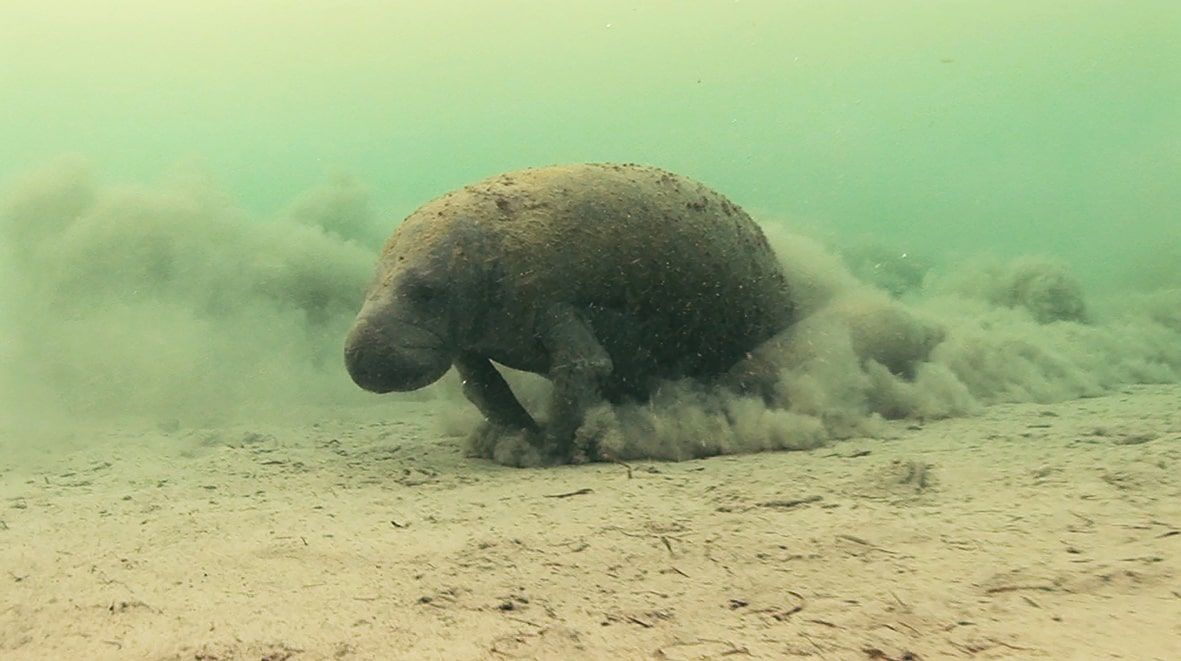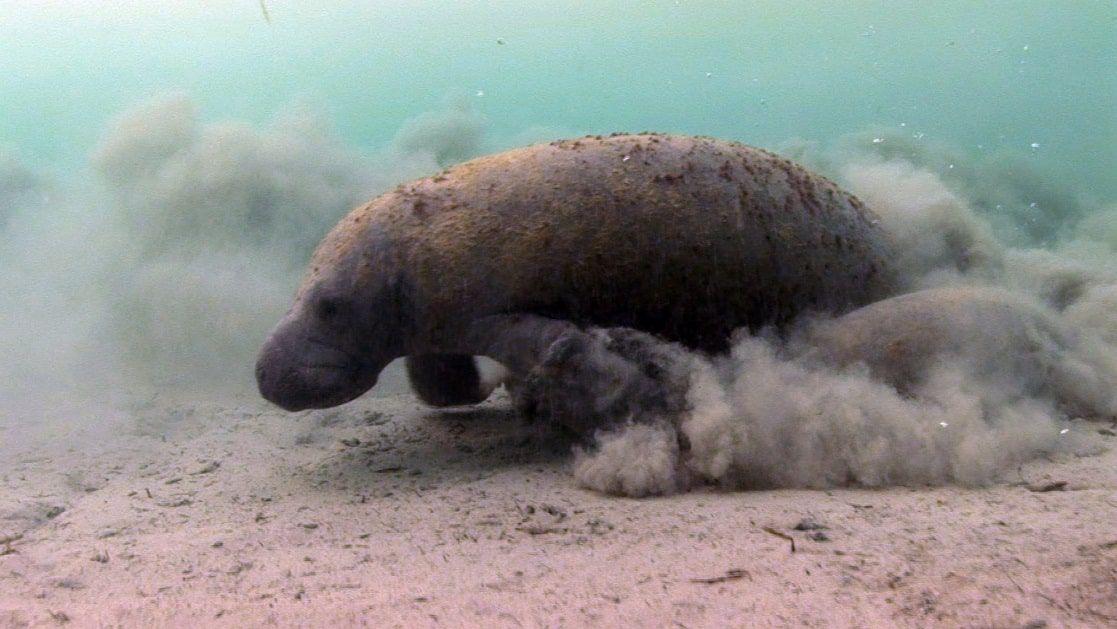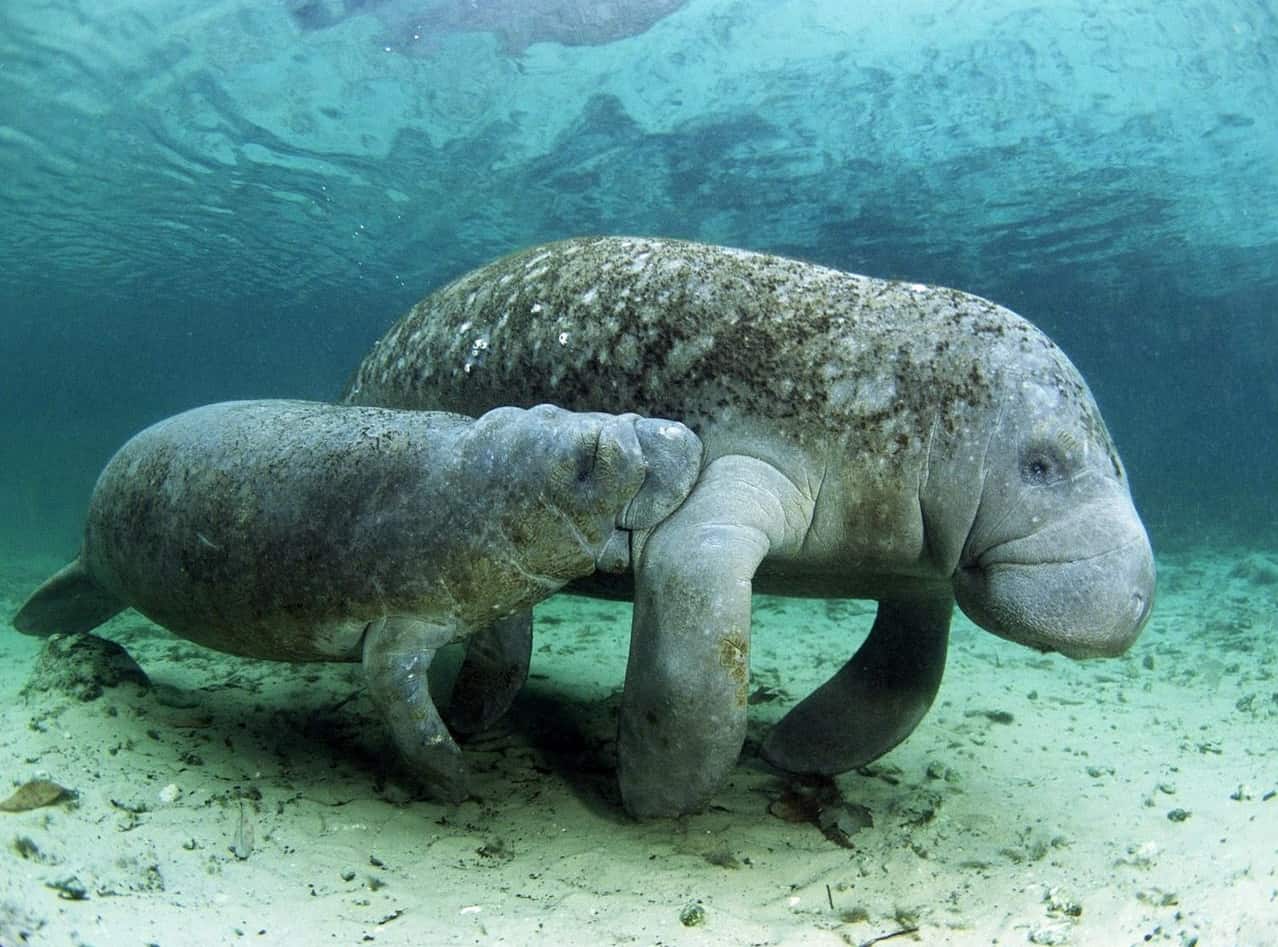10 things you need to know about the manatee
In this article, you will find 10 facts you need to know about the manatee (Trichechus manatus), one of the priority species in Mexico's Natural Protected Areas.

Manatees belong to the Order Sirenia, which includes three species of Manatees and the Dugong. In Mexico, there is only one species called Antillean Manatee (Trichechus manatus), which also inhabits the Florida peninsula, islands of the Caribbean Sea, and the Atlantic coast of Central and South America, as far as Brazil.
There is information that the Manatee was a species widely exploited by the Mayan and Olmec cultures on the coasts of the Gulf of Mexico and the Caribbean Sea, a practice that was later adopted by the Spanish in colonial times and has lasted until the present day. This exploitation depleted populations that were previously more abundant and more widely distributed.
Furthermore, the increasing use of the coastal strip for human activities has reduced, damaged, or destroyed many of the areas previously occupied by manatees. Their habitat, which includes marine, lagoon, and riparian ecosystems, is now shared with areas of urban, port, tourism, fishing, and agricultural development. Because of these factors, the manatee is considered endangered.
As a measure to help slow this process, the Manatee was included in the list of endangered species in Mexico; likewise, sharing the risk status with other countries in the region, the International Union for Conservation of Nature (IUCN) included the subspecies Trichechus manatus in its red list with the status of "endangered". Moreover, the International Agreement on Trade in Endangered Species also protects the species, regulating all types of use and trade between countries.

10 things you should know about the manatee
Behind this friendly gray-colored marine mammal, with a barrel body and tender gaze, there are many interesting facts about its life cycle that you should know about the manatee.
It is known as the "sea cow" because it is the only herbivorous marine mammal. It feeds on 60 types of marine plants, such as algae, mangroves, and seabed found in shallow waters.
The skin of adult manatees is very thick, up to 6 centimeters thick.
Manatees rise to the surface to breathe for approximately 5 minutes, however, they are able to hold their breath underwater for up to 20 minutes.
Elephants are their closest terrestrial relatives.
The range of this species includes rivers, estuaries, and coastal areas of tropical and subtropical regions.
They reproduce once every two to three years and gestations last one year.
The oldest fossil records of manatee ancestors come from the early Eocene.
They are the only mammal with six cervical vertebrae.
They produce sounds such as squeaks, chirps, and whistles which are the most common.
They have a divided upper lip. Each side can move independently of the other.

September 7th, National Manatee Day
The manatee is characterized by its robust and rounded body, hydrodynamic shape, and thick grayish skin. When they reach adulthood, these peaceful animals weigh almost half a ton and measure almost 3 meters and reach an average age of between 50 and 60 years. Historically its distribution covered all the states of the Gulf of Mexico, from Tamaulipas to the coast of Quintana Roo.
It inhabits the Natural Protected Areas of Pantanos de Centla Biosphere Reserve, Laguna de Términos Flora, and Fauna Protection Area, Ría Celestún Biosphere Reserve, Ría Lagartos Biosphere Reserve, Sian Ka'an Biosphere Reserve, and Holbox Island within the Yum Balam Flora and Fauna Protection Area.
The manatee (Trichechus manatus) is the largest aquatic herbivore in the world, measuring just over one meter at birth and weighing only 30 kilos.
The conservation of the manatee and the coastal ecosystems in which it lives is an activity that for 30 years has required the joint work of academic groups, federal and state governments, and organized civil society, to obtain biological knowledge, social participation, law enforcement, and implementation of conservation actions and strategies.

Description of the species
The Manatee is a robust animal, with a round body, hydrodynamic shape, and thick grayish skin. It has a pair of pectoral fins and one round, flattened caudal fin. At birth they measure between 90 and 100 cm, and when adults they can reach 3 m in length. The main characteristics of manatees are: they have only six cervical vertebrae, dense bones (pachyostosis), and continuous replacement of molar teeth throughout their lives.
The body has very thin and sparse hair, almost imperceptible, but in the mouth region, they have thicker and shorter vibrissae that have sensory functions. There is no visible sexual dimorphism; the only differentiation is seen in the genital region due to the location of the genital and anal openings.
Manatees are animals with a low reproductive rate: they reach sexual maturity between three and six years of age; their gestation period is at least 12 months and can extend up to 15 months; most births are of a single calf, twin births are very rare; at birth, the calf is totally dependent on the mother who breastfeeds and cares for it for one or two years; therefore, the reproductive interval of a mother can last from two to five years.
Manatees do not have stable social formations nor do they form herds, but rather group together casually in feeding areas or during the rutting season. The only lasting social relationship is that of the mother with her calf. Adults spend most of their time eating, resting, and exploring their environment. They are herbivores; they can eat submerged, emergent, and floating aquatic plants. For this reason, they prefer mangrove ecosystems, seagrasses, algae, and aquatic vascular plants.
The ecological characteristics of the Manatee's habitat are shallow waters (less than 3 m depth) with temperatures above 20 ºC, and with the presence of areas with abundant aquatic vegetation. In marine ecosystems, manatees prefer coastal lagoons and river mouths, followed by coasts protected by reefs, and to a lesser degree, keys. They can inhabit freshwater, marine, and estuarine ecosystems. In marine environments, they need nearby sources of freshwater for drinking, such as springs and river mouths.
Studies with radiomarked manatees have shown that they can travel several hundred kilometers. These movements can be influenced by seasonal changes in flood levels of water bodies, changes in the salinity of estuaries, changes in food availability, and reproductive behavior. Forced by these factors, manatees can move from inland riparian environments to the coasts and vice versa, although no defined migratory patterns have been observed in Mexico as in Florida.
Source: CONANP




